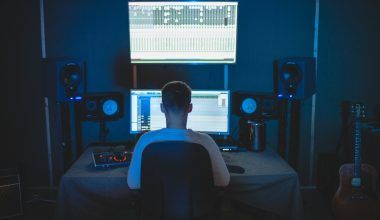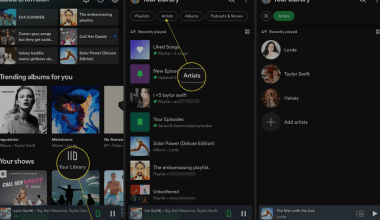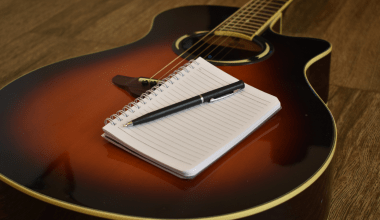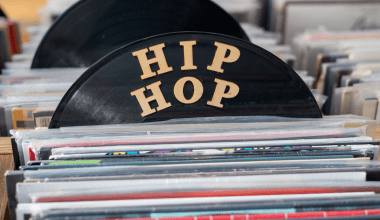When people talk about “LPs” in music, they’re usually referring to a type of record called a long-playing record. These LPs are vinyl records that can hold a lot of music on one disc. But the term “LP” is much more than just a way to describe a music format. LPs have played a big role in the history of music, changing how artists create and how people listen.
In this guide, we’ll explain what LP means in music, how it came to be, and why it’s still important today—even in the age of digital music and streaming services. Whether you’re new to vinyl records or simply curious about the history of LPs, this guide will help you understand why LPs are special. We’ll also share tips for artists who want to sell their music, including platforms like Beatport.
What Does LP Mean in Music?
LP stands for long play or long-playing record. It’s a format of vinyl record introduced in 1948 by Columbia Records. Before LPs, most records could only hold one song per side. LPs changed that by allowing up to 45 minutes of music on a single disc, with around 22 minutes per side. This gave artists more room to experiment and allowed listeners to enjoy a full album without changing records too often.
Today, when someone refers to an LP, they might mean:
- A physical vinyl record.
- A full-length album, even if it’s in a digital format.
The History of LPs in Music
To really understand why LPs are important, let’s go back in time.
The Early Days of Records
Before LPs, people listened to music on shellac records that spun at 78 RPM (revolutions per minute). These records could only hold about three to five minutes of music on each side. That worked for single songs or short pieces, but it wasn’t ideal for longer works like symphonies.
The Birth of the LP: 1948
In 1948, Columbia Records created the 33 1/3 RPM vinyl record, known as the LP. This new format could hold up to 22 minutes of music per side. This was a game-changer because now people could enjoy longer pieces of music—like an entire symphony or a collection of songs—without interruption.
The Golden Era of LPs: 1950s-1970s
The 1950s to the 1970s were the golden years of LPs. During this time, many of the most famous albums in music history were released as LPs. Bands like The Beatles, Pink Floyd, and The Rolling Stones used the LP format to create full-length albums that told stories or explored themes.
Decline and Comeback
In the 1980s, CDs (compact discs) became popular, and LPs started to fade. By the 2000s, digital music and streaming platforms like Spotify dominated the music world. But something surprising happened: LPs made a comeback. Vinyl records became popular again, especially with collectors and music lovers who appreciate their unique sound and tactile experience.
What Makes LPs Special?
LPs aren’t just another way to listen to music—they offer something unique. Here’s why people love them:
1. Long-Playing Time
An LP can hold a lot of music. Most LPs have 8 to 12 songs and last about 30 to 45 minutes. This gives artists more space to tell a story or explore a theme.
2. Warm Sound
Many people believe that vinyl records sound better than digital formats. The sound from an LP is “analog,” which means it’s a continuous sound wave. This creates a warm, rich tone that’s hard to replicate with digital music.
3. Artwork
LPs come with big, 12-inch covers that often feature stunning artwork. In the past, bands and artists used album covers to make bold artistic statements. Today, LP covers are considered collectible art.
4. Tangible Experience
Unlike streaming, playing an LP is a hands-on experience. You take the record out of its sleeve, place it on a turntable, and lower the needle. Many people find this process enjoyable and nostalgic.
LPs vs. EPs and Singles: What’s the Difference?
If you’re new to music terms, you might wonder how LPs are different from EPs or singles. Here’s a quick comparison:
- LP (Long Play): A full album with 8 to 12 songs, lasting 30-45 minutes.
- EP (Extended Play): A shorter album with 3 to 5 songs, lasting 10-25 minutes.
- Single: One or two songs, often used to promote an upcoming album.
The Role of LPs in Music History
LPs didn’t just change how music was recorded—they also changed how it was made and consumed.
The Album Era
Before LPs, most music was focused on singles. But LPs encouraged artists to create albums that were more than just a collection of songs. They became opportunities to tell a story, explore themes, or experiment with sound.
Cultural Impact
LPs played a big role in pop culture. Famous albums like The Beatles’ Sgt. Pepper’s Lonely Hearts Club Band or Pink Floyd’s The Dark Side of the Moon weren’t just music—they were cultural events. People would gather to listen to these albums together, often reading the lyrics and studying the cover art.
Why Are LPs Making a Comeback?
In recent years, vinyl records have become popular again. Here’s why:
- Sound Quality: Many people prefer the warm, analog sound of LPs.
- Physical Connection: LPs offer a hands-on experience that streaming can’t match.
- Collectibility: Vinyl records, especially rare ones, are now valuable collectibles.
- Nostalgia: For some, LPs are a way to connect with the past.
Selling Your Music as an LP on Beatport and Other Platforms
If you’re an artist, LPs aren’t just for nostalgia—they’re a great way to connect with your audience. Even in the digital world, creating an LP can help you stand out.
What Is Beatport?
Beatport is a popular platform for electronic music. Artists can upload and sell their music, reaching a global audience. While Beatport is mostly digital, you can still release your music as an LP by creating a cohesive, full-length album.
Tips for Artists:
- Plan Your LP: Think of your LP as a story. Make sure your tracks flow well together.
- Use Great Artwork: Even in digital form, cover art matters.
- Promote Your LP: Share behind-the-scenes stories about your LP on social media to engage fans.
The Future of LPs
The LP has proven to be more than just a passing trend. As technology evolves, LPs continue to hold a special place in music culture. They are symbols of artistry, creativity, and tradition.
Conclusion:
LPs have been around for over 70 years, and they’re still loved by musicians and fans alike. Whether you’re a collector, a music lover, or an artist looking to release your first album, LPs offer something special. They’re not just about the music—they’re about the experience.
So the next time you listen to an LP, remember: you’re not just enjoying a record—you’re connecting with a rich history of music and creativity.
Related Articles:
For further reading, explore these related articles:
- Stereo Speakers Meaning – Everything You Need to Know About Stereo Sound
- Music Promotion Services: How to Grow Your Music Career
- Music Press Release Format Made Easy: Step-by-Step Guide
For additional resources on music marketing and distribution, visit Deliver My Tune.






